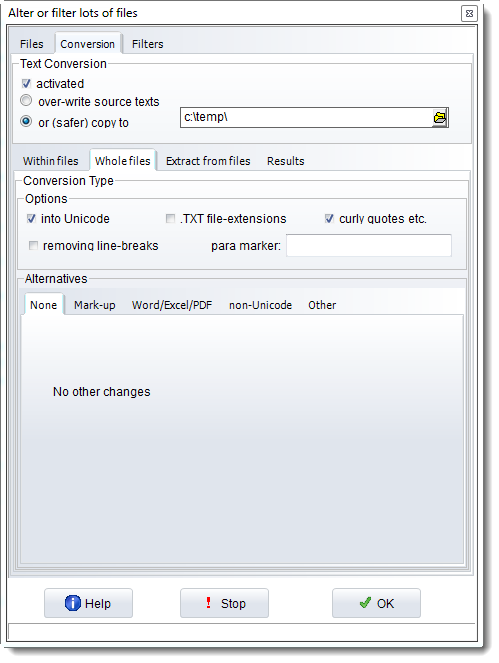


The most commonly used encodings are UTF-8 and UTF-16.Ī common problem with these encodings is the need to provide a way of representing line terminators. The standard defines how to represent a sequence of code points in memory as a series of code units, and how to map these codes into a sequence of 8-bit bytes that can be represented by a computer’s CPU. To combat this, a unified character encoding standard was needed. This resulted in a great deal of confusion and misunderstanding, which led to data corruption during transfer between computers.

Before Unicode, text files and web pages were vulnerable to conflicting encodings, making it difficult to read them across different systems, applications, or devices.

Unicode is an international character encoding standard that gives a unique number to every character across languages and scripts, making almost all characters accessible on all platforms. However, it is not compatible with certain software programs like Corel Draw, Adobe Photoshop, etc. It is a great help for designers, publishers, and media persons to type Urdu on tablets, mobile phones, or any other device. It is widely used for the consistent encoding of written text. Don't forget to bookmark this page.Unicode is a distinctive pattern of numeric values that renders every language. For other resources check our Learn Languages page. The following are some of the languages and scripts supported: Arabic, Chinese characters, Japanese Hiragana, Katakana, Kanji, Hanyu Pinyin Cyrillic, Armenian, Bengali, Bopomofo, Devanagari, Georgian, Greek, Coptic, Gujarati, Gurmukhi, Hangul, Hebrew, Hiragana, Kannada, Katakana, Lao, Latin, Malayalam, Oriya, Tamil, Telugu, Thai, Hangul, Cherokee, Ethiopic, Khmer, Mongolian, Myanmar, Ogham, Runic, Sinhala, Syriac, Thaana, Unified Canadian Aboriginal Syllabics, Yi Syllables, Buhid, Hanunó'o, Tagalog, Tagbanwa, Cypriot syllabary, Limbu, Linear B, Osmanya, Shavian, Tai Le, Ugaritic added, Hexagram symbols, Buginese, Glagolitic, Kharoshthi, New Tai Lue, Old Persian, Syloti Nagri, Tifinagh added, Coptic, Ancient Greek numbers, Balinese, Cuneiform, N'Ko, Phags-pa, Phoenician added, Carian, Cham, Kayah Li, Lepcha, Lycian, Lydian, Ol Chiki, Rejang, Saurashtra, Sundanese, Vai added, symbols for the Phaistos Disc, Mahjong tiles, Domino tiles, Avestan, Bamum, Egyptian hieroglyphs, Imperial Aramaic, Inscriptional Pahlavi, Inscriptional Parthian, Javanese, Kaithi, Lisu, Meetei Mayek, Old South Arabian, Old Turkic, Samaritan, Tai Tham, Tai Viet, Vedic Sanskrit. Example سليم becomes س ل ي م īenefits of Unicode: Text in any language can be exchanged worldwide, which eliminates data corruption and other problems due to incompatible code pages or missing conversion tables.


 0 kommentar(er)
0 kommentar(er)
